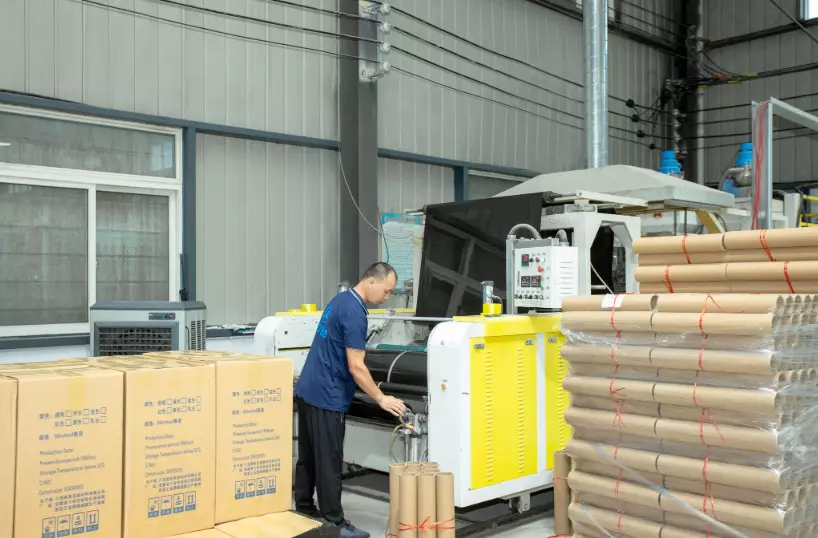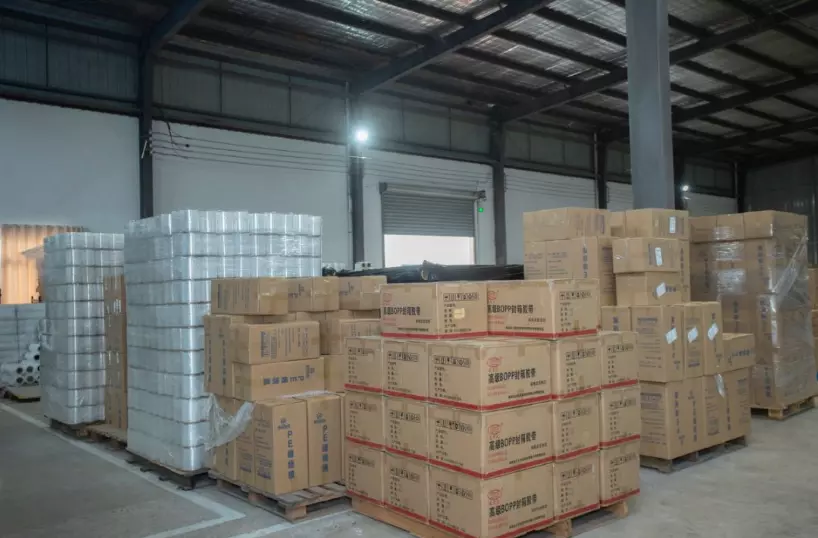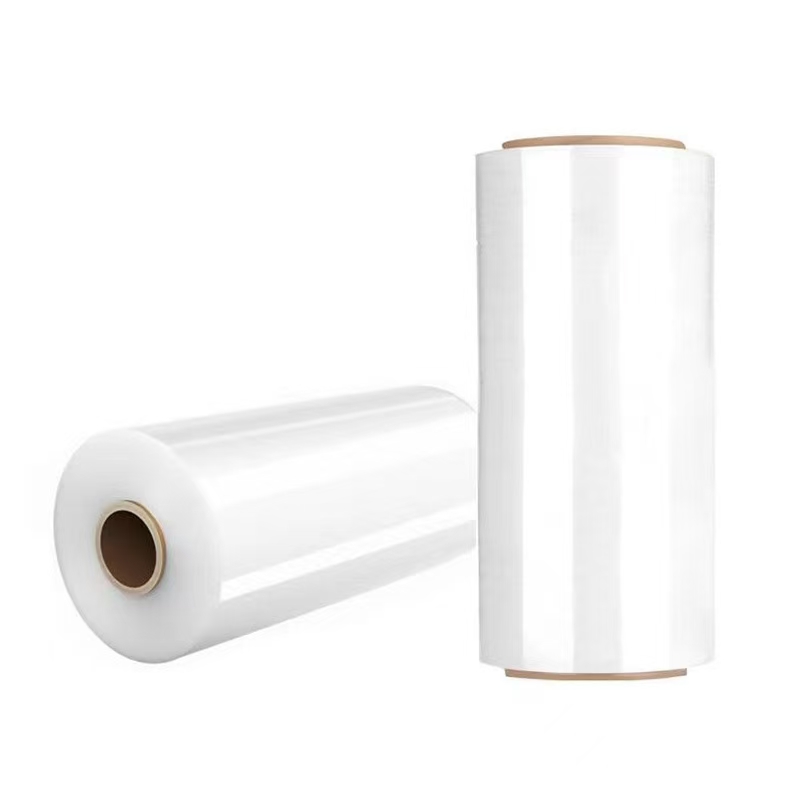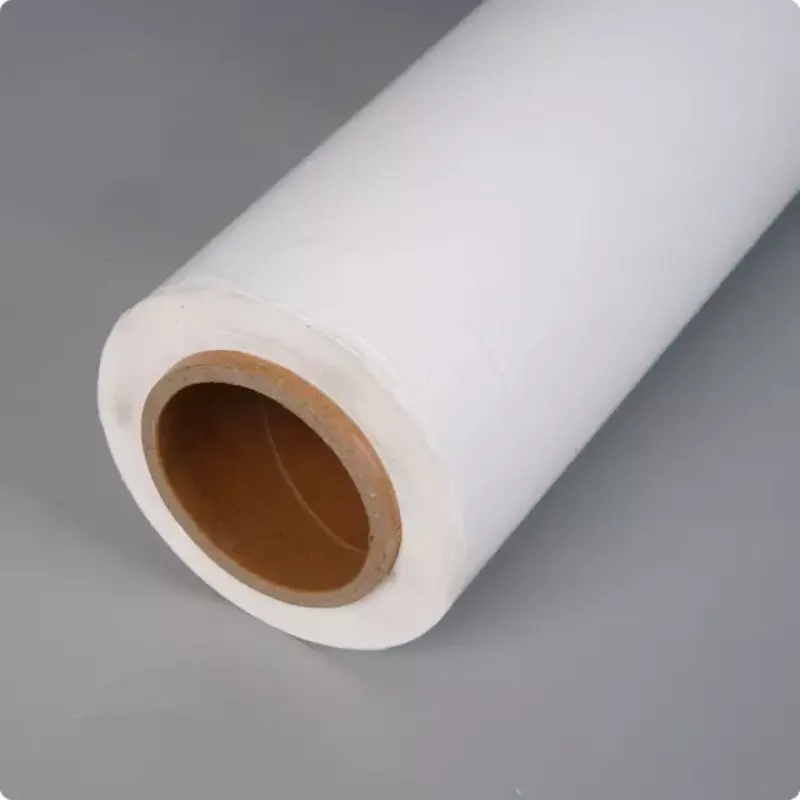Diferenças entre filme estirável manual e filme estirável mecânico
Release time: 2025-06-26
Both hand stretch films and machine stretch films serve the same primary purpose of wrapping and securing goods, particularly palletized items, to prevent loosening, collapse, contamination, and some degree of damage during transportation. The key differences lie in their design, performance, and application scenarios.
Core Differences
Thickness
Hand stretch film is typically thinner, with a common thickness range between 12 microns (µm) and 20µm. It is designed to be thinner for ease of manual handling and tearing.
Machine stretch film, on the other hand, is generally thicker, with a common thickness range from 20µm to 30µm or even higher. The increased thickness helps it withstand the powerful, continuous stretching force applied by mechanical stretchers without tearing or puncturing, making it a high-performance stretch film suitable for more demanding applications.
Pre-stretch Rate
Hand stretch film has a lower pre-stretch rate. It relies on the worker to manually apply stretching force, with pre-stretch rates typically ranging from 150% to 250%. This means that a 1-meter length of film can be stretched to 1.5 to 2.5 meters. Hand stretch films are designed to be more easily stretchable by hand.
Machine stretch films have a higher pre-stretch rate, as the packaging machines are equipped with pre-stretch mechanisms that stretch the film forcefully before it wraps the goods. The pre-stretch rate can reach 250% to 300%, or even higher. High pre-stretch is a key advantage of machine stretch films, significantly reducing film usage.
Puncture and Tear Resistance
Hand stretch film has relatively lower requirements for puncture and tear resistance. Since it is manually operated, the force applied is controlled, and the wrapped items are usually lighter or more uniform. The film is designed with some tear resistance to prevent accidental rips during manual handling.
Machine stretch film, however, requires much higher puncture and tear resistance due to the high tension exerted by the machines and the impact from the goods during the wrapping process. The higher strength ensures the film doesn’t rupture during mechanical stretching and wrapping, ensuring packaging efficiency and reliability. This makes stretchable packaging film ideal for heavy-duty packaging environments.
Adhesion
Hand stretch film has a higher initial tack. This ensures that the film adheres quickly to the goods and the already wrapped layers, preventing it from loosening and improving operational efficiency.
Machine stretch film typically has lower and more controlled adhesion. Excessive tack could lead to the film sticking to the rollers of the machine, causing wrapping issues, film breakage, or machine downtime. The film needs to have reliable inter-layer adhesion, meaning that once wrapped, the layers should stick tightly together without interfering with the machine’s operation.
Materials
Both types of stretch films are made from LLDPE (Linear Low-Density Polyethylene).
Hand stretch films focus on flexibility, ease of stretching, and high initial tack, providing highly elastic stretch films suitable for manual packaging tasks.
Machine stretch films, however, are more complex in their formulation and may include additional modifiers (such as metallocene polyethylene – mLLDPE) to enhance strength (tensile, puncture, tear resistance) and durability (resistance to temperature extremes). They also require precise control over adhesion to ensure smooth machine operation. Higher purity and consistency of the resin are required for machine films.


Application Differences
Hand stretch films, which are more flexible, are ideal for:
- Irregularly shaped, oversized, or extremely heavy items.
- Special wrapping requirements (e.g., wrapping only the middle or specific reinforcement points).
- Small batch, temporary, or diverse packaging needs.
- Individual or small quantities of goods, such as repairs or returns.
Machine stretch films are best for standardized, large-scale applications:
- Uniform box-shaped goods on standard-sized pallets.
- High-volume, continuous shipments.
- Scenarios requiring high packaging consistency (e.g., exports).
- Logistics points where high packaging efficiency is critical.
Recommendation for Selection
For small volumes, irregularly shaped or varied-sized goods, high flexibility, limited budget, or occasional packaging needs, hand stretch films are recommended.
For large volumes, standardized or uniform items, high efficiency, lower labor costs, reduced per-package cost, and greater packaging consistency, investing in a stretch wrapping machine is a wise choice, particularly when labor or film consumption costs are a concern.
In many warehouses or factories, both hand stretch films and machine stretch films are used. Hand stretch film is used for small batches or items that are not suitable for machines, while machine stretch film is used for the main mass production of standardized pallet packaging.


